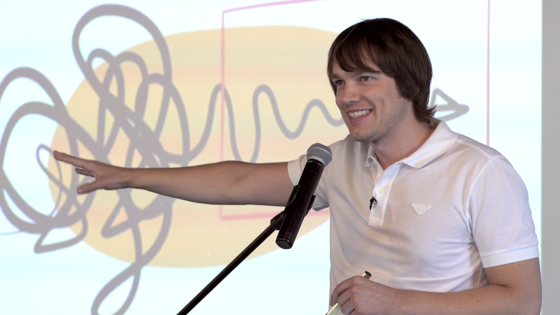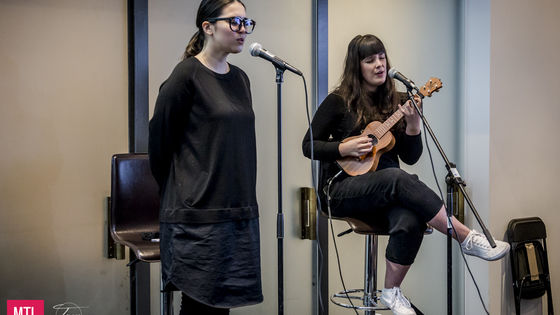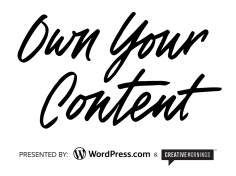This toolkit is a growing library of wisdom that highlights the hurdles of owning your content and building your platform. We not only curate the wisdom from creative leaders and artists, but also from the community—a balance of both, like cheese and wine—so that you’re supported and empowered to build your home on the internet.
In the last decade, many different platforms and methods for connection have influenced the way we communicate. And yet, email is still the most effective, prevalent tool that opens possibilities and sparks relationships. Nowadays, a thoughtful email is an art. When done well, it is a delight to read and creates an impression about the sender.
Thoughtfulness takes time and effort. People have become attuned to feeling emails that lack warmth, personality, or clarity. Like a stranger that bumps into you without saying ‘excuse me,’ weak emails are the cold shoulder of the internet.
Thoughtfulness is a muscle that grows the more you exercise it. You can also learn from examples of well-written emails, dissecting the paragraphs to understand the cadence and tone throughout it. Once you have an established framework that works, then the words and clear intentions flow naturally.

Meet Grace Bonney, founder of Design*Sponge
She is one of the earliest bloggers, starting in 2007 and building her platform for 15 years, interviewing over a thousand creatives and publishing thousands of blog posts. She’s also a two-time New York Time’s best-selling author.
Grace’s work is about telling stories of creative communities around the world, and in order to do that effectively, she has to collaborate and reach out to people. She needs to get a yes.
Read Grace’s Own Your Content interview →
She shares 4 pieces of wisdom that has grown over her 15+ year career in creating one of the most popular design blogs on the internet.
|
|---|
Read Grace Bonney’s interview on the art of thoughtful communications that lead to clear collaborations, and also the best email she ever received.
Encouragement for next steps
- Draft up an email to someone that you want to work with or learn from, but don’t send it yet.
- Read your email out loud. Read it in a different accent. Read it in a robot’s voice. Have a friend read the email and give you feedback.
- Is your tone friendly and uplifting? Is your ask crystal clear? Is the email concise, thoughtful, and easy to read? Did you spell their first name correctly? Are you leading with a kind salutation?
Additional Resources
Fred Wilson’s The Double Opt-in Email Introduction
Alas, an etiquette that isn’t taught in school or in commonplaces. Before you introduce people to someone you know, or vice versa, get consent first.
Links to Help You Collaborate
New Collaborations requires discovering new co-conspirators. Here are a few directories to get you started:
Blacks Who Design
A directory of accomplished black designers.
Women Talk Design
Discover brilliant diverse speakers for your next event.
Women & Color
Find talented women and people of color available for speaking opportunities at tech-related events.
CreativeGuild
Over 300,000 creatives from CreativeMornings’ global community.
Latinxs Who Design
A living directory of thriving Latinxs in the design industry.
Working Not Working
Connecting companies with the universe’s most creative creatives.
Behance
an online platform that enables creative professionals to showcase and discover creative work.
Designer Hunt
Learn from talented designers.
Related CreativeMornings Talks
Watch some of these featured talks on collaboration, and thousands more on creativemornings.com →
 |
Co-Founder and CEO of FiftyThree, Inc., Georg Petschnigg, looks at collaboration through the topics of network, tools, and creative process. |
 |
Brandon Hill and Peter Chang of No Kings Collective on the importance of collaboration. |
 |
Milk & Bone, the popular Montreal duet, opens up about the many languages and collaborations they have had to develop in order to create their unique style. |
 #OwnYourContent
#OwnYourContent
Share the project that you’re working on with #OwnYourContent and see what other creatives are saying about these topics.
Read more interviews and toolkits at ownyourcontent.wordpress.com.
Build your home. Own your content. Get 20% off your next WordPress.com site. An offer from our Global Partner WordPress.com for the CreativeMornings community.
Toolkit by Paul Jun. Illustrations by Jeffrey Phillips. ‘Own Your Content’ illustration by Annica Lydenberg.

Reblogged this on Global Sisterz Media Collective™ and commented:
#PhoenIIXSistahs™ || CultivateCurateCommUNITY
LikeLiked by 4 people
Thank you for the helpful tips!
LikeLiked by 3 people
Nice,great job
LikeLiked by 4 people